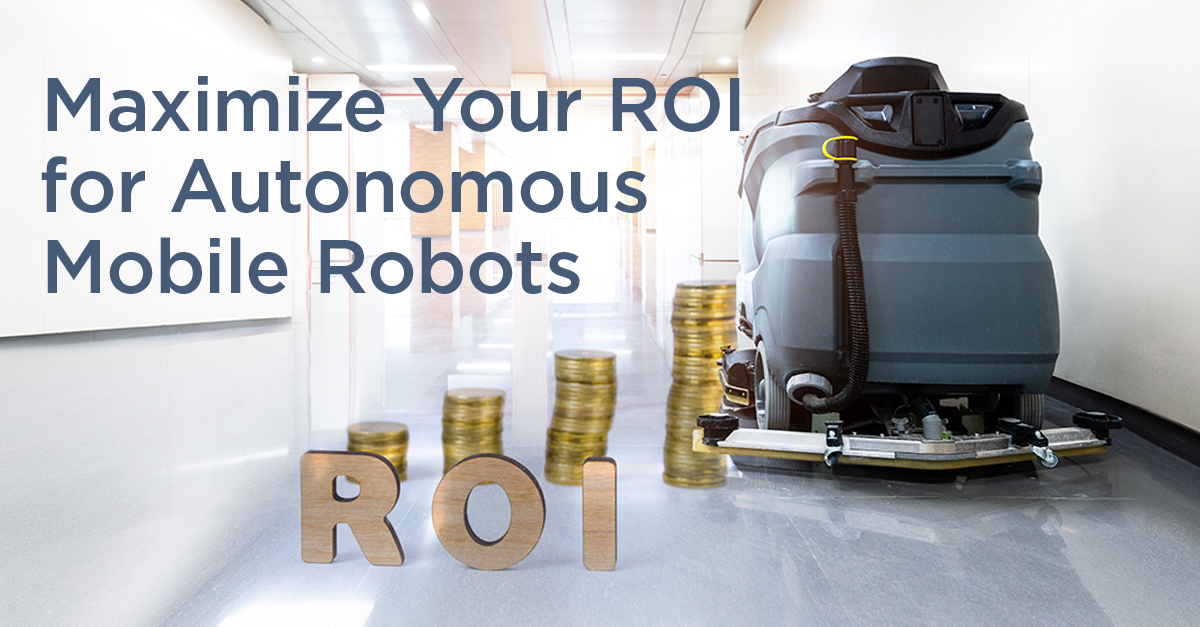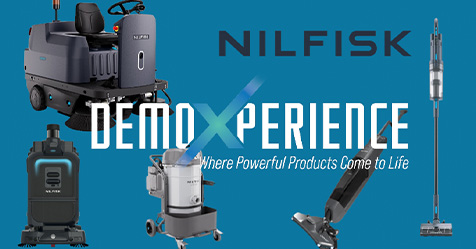As autonomous mobile robot (AMR) options become more abundant and cost-effective each year, organizations are increasingly considering the purchase of this equipment to streamline various tasks within their facilities. However, the mere acquisition of AMRs does not guarantee success.
Although AMRs might appear to be the perfect solution for your facility, it’s crucial to rein in your excitement for innovation to first analyze their benefits through the lens of a pragmatist. In doing so, you will soon realize that the successful implementation of an AMR program depends on aligning key performance indicators (KPIs) with
your expectations for the autonomous equipment.
Uncover your expectations by setting clear and measurable objectives that reflect the intended benefits of an AMR program. These benefits can include increased efficiency, higher quality of services rendered, reduced operational costs, and enhanced safety.
Essential considerations
After setting your expectations, consider what you must work with regarding the location where you will use AMRs, the staff that will operate it, and the goals you hope to achieve through its use.
Location plays a pivotal role in the effectiveness of AMR deployment. Conduct a thorough assessment of your facility’s layout, size, accessibility, and operational dynamics in comparison to AMR functionality and capability. It is unlikely that you will see your desired return on investment (ROI) from AMR implementation if your facility has insufficient space, inadequate accessibility, or suboptimal traffic flow that impedes AMR performance.
In addition, consider the frequency of tasks and the density of traffic when selecting deployment locations. High-traffic zones or areas prone to congestion may benefit significantly from AMR
integration to alleviate manual labor burdens and expedite task completion.
Look at the strengths and weaknesses of the various AMR models. Some are designed to function smoothly in populated areas, while others are better suited for second- and third-shift
utilization. If the equipment needs to service multiple buildings, larger AMR units will be more difficult to transport and can be prone to damage. And while larger units can get the job done more quickly, they may not be able to address hard-to-reach edges. However, smaller units that can reach edges may need to recharge mid-job, requiring an accessible docking station or human assistance for charging.
Successful AMR integration hinges upon comprehensive understanding and support from an entire facility operations team. Ensure that all stakeholders—from frontline workers and
management to finance teams and leadership—grasp the function and goals of introducing AMRs into the workflow.
By nurturing a culture of collaboration and knowledge-sharing, your organization can mitigate resistance to change and foster enthusiasm for embracing AMR technology. Establish clear communication channels to address any concerns or misconceptions regarding AMR implementation. Develop training programs to familiarize employees with AMR operations, maintenance protocols, and safety procedures.
Performance accountability will be critical, especially in larger operations and in those running second and third shifts. Most AMRs have reporting software (either included free-of-charge or through a subscription) that can provide analytics to measure KPIs.
Vendor evaluations
When evaluating AMR vendors and their offerings, approach the decision-making process with a critical mindset that will allow you to assess each option pragmatically. Choosing a reputable vendor can mitigate risks associated with equipment failure, compatibility issues, and inadequate support services. While vendors may tout their solutions as the perfect remedy for addressing facility challenges, prioritize those that demonstrate a deep understanding of your organization’s specific operational requirements.
Don’t be swayed by brand names and innovative features. Instead, conduct thorough research, seek recommendations from industry peers, and request product demonstrations. Evaluate each vendor’s track record regarding reliability, scalability, and post-sales support.
With numerous AMRs coming into the market each year, you can choose between proven, turnkey solutions or a new offering from a vendor eager for early-use input, which can lead to real-time
AMR personalization.
Innovation through AMR integration
Although AMRs can help facilities revolutionize their management practices, improve their operational efficiency, and enhance their overall productivity, these benefits are dependent on meticulous planning, strategic decision-making, and alignment with organizational objectives. Organizations that do their homework on deployment locations, staff training, equipment expectations, and vendor evaluations can capitalize on the transformative capabilities of AMRs and maximize their ROI in facility management costs. Embracing a pragmatic approach to AMR implementation enables organizations to navigate challenges effectively and leverage technological innovations to achieve sustainable competitive advantages in an evolving business landscape.
Schools Embrace AMR Technology
In K-12 schools and multi-facility colleges and universities, employees with SSC Services for Education, a building service contractor that specializes in maintaining schools, have found
autonomous mobile robots (AMRs) to be a worthwhile investment that simplifies their floor care routine.
Laura Davidson, a unit director with SSC Services who works at Texas State University, said the university’s AMR has allowed cleaning staff to work on other tasks rather than spend
hours washing floors.
“The machine reduces time spent on the task at hand, allowing our team to complete other more detailed tasks,” she said. “It sends alerts when maintenance is needed—such as needing to add additional water to the tank, so we know when to check on it and make adjustments.”
Davidson said the biggest challenge in AMR utilization was setting up new cleaning processes.
“There is always a learning curve when it comes to implementing new technology, but by being diligent with training and expectations, these tools become routine and are a huge benefit to our
teams,” she said.
Cleaning crews at Rogers Public Schools in Arkansas are also working more efficiently since the introduction of an AMR in the school district.
“Overall, the machine has made our floor technician positions more efficient—instead of needing at least one associate dedicated to that specific task, our floor techs can use the AMR to scrub while they continue to dust mop and do other duties in the general area,” said Andrew Thacker, a resident regional manager with SSC Services at Rogers Public Schools. “It allows our team to multitask well, and because it learns the most efficient route, the more we run it, the less time it needs to do the job, giving us plenty of time to go back and scrub any problem areas twice.”



